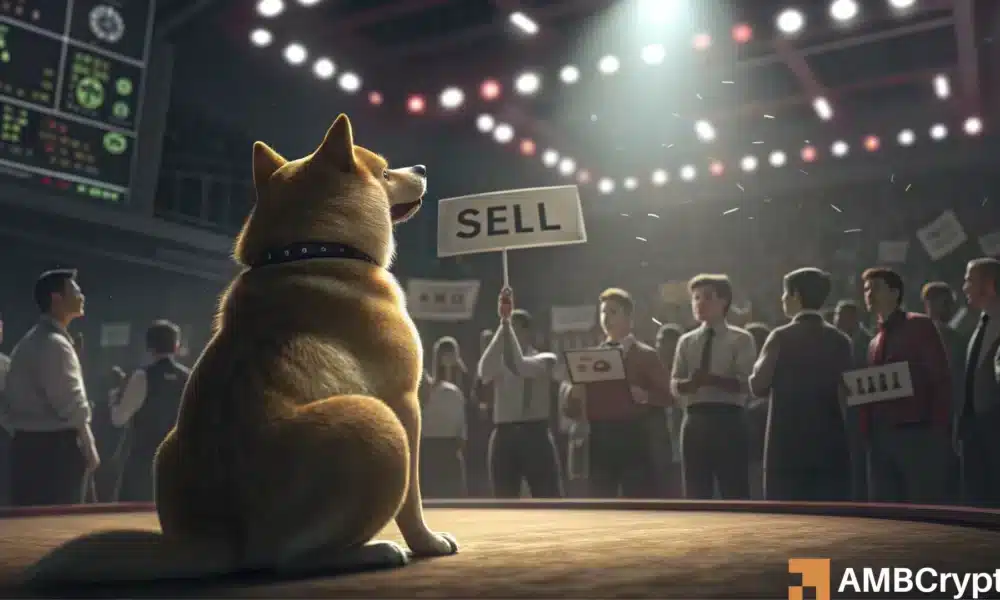The Current State of Dogecoin (DOGE): Analyzing Market Trends and Selling Pressure
Dogecoin (DOGE), once a celebrated meme-inspired cryptocurrency, is currently facing significant selling pressure from short to mid-term holders. Recent market dynamics have saw the influx of about 400 million DOGE into Binance, indicating a concerning trend among holders who may be capitulating. With DOGE having dipped back to its $0.17 support level, down 31% from its May highs, the future of this cryptocurrency depends heavily on whether holders will remain loyal or capitulate further.
Growing Selling Pressure Among DOGE Holders
The sentiment surrounding DOGE is increasingly negative, as reflected in on-chain data. Approximately 30% of DOGE addresses are currently holding assets at a loss, with acquisition prices surpassing the present spot price of $0.18. The alarming trend accelerated after DOGE broke below the crucial $0.20 support level, prompting HODLers to carry out significant sell-offs. In just the last three days, over $800 million in realized losses were recorded. This influx into Binance is further evidence that many holders are preparing to sell if any upward movement occurs.
The Impact of Short and Mid-Term Holders
What separates the current DOGE situation from previous cycles is not just the price decline but the behavior of different investor cohorts. While long-term holders remain undeterred, short to mid-term holders are starting to buckle under the pressure. The familiar behavior of "buying low and selling on the pump" has re-emerged, leading to a cycle of speculative trading. The result is a considerable portion of addresses now underwater, compounding the downward pressure on the asset’s price.
Short-Term Distribution and Its Consequences
As Dogecoin faced resistance at the $0.25 level, the Short-Term Holder Net Unrealized Profit/Loss (NUPL) metric flipped negative. This shift signals that short-term holders have effectively capitulated, aggravating the downward pressure on DOGE’s valuation. The effect of this capitulation has been twofold: it has not only pushed DOGE below the critical $0.20 support but also compressed profit margins for these investors. The decline in holder conviction signals that many are getting anxious about realizing their losses.
The Role of HODL Waves in Selling Dynamics
The HODL Waves metric provides further insight into the market dynamics at play. Notably, the share of Dogecoin supply held by the 3–6 month cohort surged from 10% in March to a peak of 15.53% during the rally. Post-rally, this cohort started reducing their positions, either realizing profits or exiting at breakeven. Their share of the supply has since fallen back to 12.4%, illustrating a clear selling trend. As short-term holders capitulate, the broader DOGE audience feels the pressure to realize their losses, increasing the chances of a downward price movement.
The Critical Level of $0.17
Unless Dogecoin can escape this tightening bubble and break past the $0.25 resistance level, it appears that the current support at $0.17 is under serious threat. The selling behavior observed suggests a growing consensus among holders that the market may not recover in the short term. The unique characteristics of DOGE’s speculative trading culture mean that both pessimism and optimism can rapidly shift, but unless a turnaround occurs soon, maintaining this support level could prove difficult.
Conclusion: The Future of DOGE Remains Unpredictable
In summary, Dogecoin’s current troubles reflect broader market sentiments that could either lead to recovery or further declines. With short to mid-term holders feeling financial strains, the potential for capitulation looms large, raising questions about investor resilience and market stability. The heightened selling pressure, lack of conviction, and the precariously positioned support level of $0.17 all indicate a critical juncture for DOGE. How the holders respond in the near future will likely dictate whether DOGE can reclaim its former highs or face a prolonged downturn.


